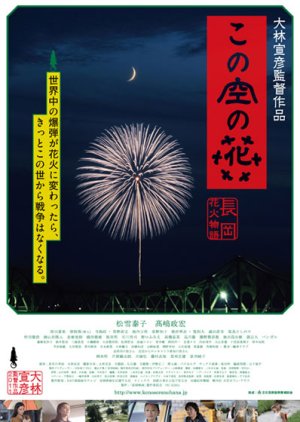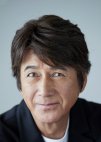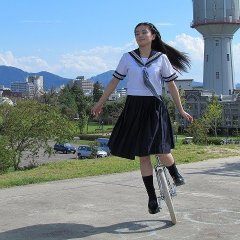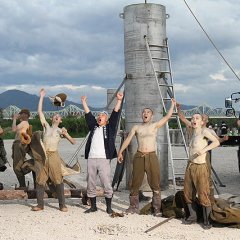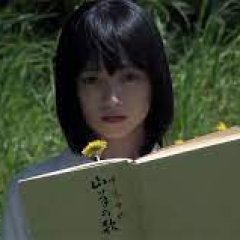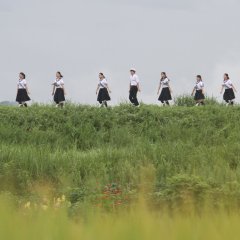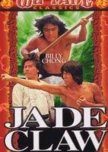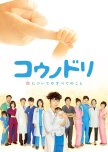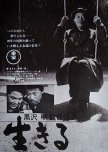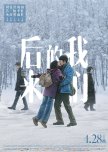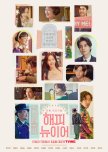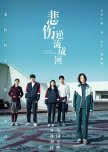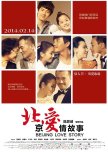Reiko Endo is a local newspaper reporter in Amakusa. She then visits the city of Nagaoka for different reasons. One is to find out why Nagaoka accepted displaced victims from the Tohoku earthquake and tsunami so quickly. As a news reporter she examines the city carefully. Another reason why Reiko Endo is visiting Nagaoka is due to a letter from ex-boyfriend Kenichi Katayama, who works as a high school teacher. In the letter, Kenichi Katayama writes about a stage play, related to the bombing of Nagaoka prior to the end of WWII, written by his high school student Hana Motoki . Kenichi Katayama wants Reiko Endo to watch the play. In the process of her visit to Nagaoka, Reiko Endo meets many of the locals and experiences unexpected events. Edit Translation
- English
- magyar / magyar nyelv
- dansk
- Norsk
- Native Title: この空の花ー長岡花火物語
- Also Known As: Kono Sora no Hana: Nagaoka Hanabi Monogatari
- Screenwriter & Director: Obayashi Nobuhiko
- Genres: Military, Drama, Fantasy
Cast & Credits
- Matsuyuki Yasuko Main Role
- Takashima Masahiro Main Role
- Kusakari MasaoHanagata JuzaburoSupport Role
- Terashima SakiMotoki RirikoSupport Role
- Fuji SumikoMotoki Ririko (present day)Support Role
- Kakei ToshioGoro MatsushitaSupport Role
Reviews

"War is fun when you're winning"
Casting Blossoms to the Sky is an anti-war film that took 2 hours and 30 minutes to try and make its point. Much was made of, “That which fills the gap is imagination.” Thus, characters spoke directly to the audience and ghosts walked about as if that was all very normal. This film was not what I expected after reading the synopsis. The victims of the 2011 earthquake and Fukushima disaster were almost an afterthought. Instead, the majority of screen time was dedicated to the 1945 bombing of Nagaoka a couple of weeks before the end of the war. The premise centered upon how fireworks and bombs are similarly made, both being explosives while one celebrates beauty and the other destroys it.Rieko Endo is a journalist who decides to go to Nagaoka for two reasons. She wants to find why the town opened its doors to refugees from the earthquake/tsunami and nuclear power plant disaster. Her ex-boyfriend also sent her a letter inviting her to a play at his high school. While in Nagaoka she meets numerous people connected to the bombing from 1945 and the making of fireworks.
This is the type of reflection and healing film I would normally love, but I did not love how it was pieced together. Characters speaking to the audience was distracting, though it dissipated as the film went on. There was repetition upon repetition. Some scenes from the bombing and making of the school play were replayed over and over and over and over. It began to dull the instrument of storytelling. The flashbacks almost gave me whiplash. The flashbacks would bounce around 2011, then to the 2006 earthquake, to 18 years ago when Reiko was with her boyfriend, flashbacks to another woman’s breakup, flashbacks to the Boshin War, along with the history of making fireworks and their use in the area, and flashbacks among numerous people and events leading up to, during, and after the Aug. 1, 1945 bombing. The bouncing around and circling back was headache inducing.
“We have nothing to do with war.”
I still have no idea what Rieko was talking about when she kept saying this regarding her broken relationship. The acting was serviceable though Matsuyuki Yasuko did more posing than emoting. All of the ex-boyfriends involved didn’t exactly evoke emotion as there were no interactions with the ex-girlfriends for the most part. Characters spoke fast and earnestly. There were unicycles everywhere, not quite sure what they symbolized. The real and surreal were often intermixed.
You will need a strong stomach for the vivid descriptions of what fire and bombs did to the human body. While I applaud the pacifist agenda, there were times it didn’t come across very realistically. “If they could see us, they wouldn’t bomb us.” The Japanese soldiers could see the civilians in Nanking and had no problem mowing them down. The comfort women were mentioned and then just as quickly dropped. The Japanese soldiers saw them and sexually abused them in every vile way possible. If every gruesome detail had to be described during the bombing repeatedly and in Soviet Union POW camps, maybe the lack of humanity for the other should have been equally described. There were plenty of atrocities to go around. And that would have made the argument stronger. During war, terrible things happen to real people. People with families, friends, jobs, children, and dreams. No one wants to suffer horrible deaths or imprisonment. No one wants to be forced to do things against their will. No one wants to see their town and home destroyed. No one wants to see their children starve to death. Why not treat everyone with respect and work through problems with words? Even if we got rid of bombs people would go back to killing each other the old-fashioned way with guns, swords, arrows, knives, spears, clubs, rocks, and/or fists. The problem lies within us, that thing that must be healed. It’s more important now than ever as we live in a world with diabolical weapons. Director Obayashi already had my attention and concurrence with, “Be friendly to each other.” Would that it were that easy.
“We have to use the pain caused by war for peace.”
The Nagaoka officials tied the fireworks into a healing and memoriam display though it was traumatizing for some of those who lived through the bombing. Many modern veterans of different wars and skirmishes have similar PTSD reactions to fireworks—the fireworks might be pretty but they sound too much like bombs. In 2011 and 2012 there were firework displays honoring both the victims of Nagaoka and Pearl Harbor in both places which was a nice reaching across the ocean in a display of peace.
“There’s Still Time Until a War.”
To stop the war? Or live life to the fullest? Casting Blossoms into the Sky was a bold, imaginative effort to show the horrors of war and why war must be avoided. The film could have been trimmed by an hour and had a stronger impact for me. I began to feel like I was stuck in a death loop watching the same gruesome events over and over again. Instead of convincing me that peace was possible it made me feel that war, like death, is inevitable.
8 October 2024

